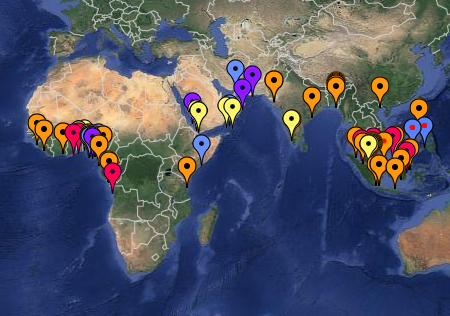Minnesota towns gear up for flood season
by: Dan Niepow
published: 7 April 2019
Flooding in several Minnesota towns could reach moderate to major stages in the coming week, according to National Weather Service forecasts.

Eric Hylden / Forum News Service
For emergency managers and elected officials in many of those towns, though, it’s business as usual until the worst hits. And that’s if major flooding even materializes. “It’s way too early to panic,” said Erika Martin, mayor of Oslo. “We have to watch, and it’s good to be prepared. But we take it day by day.”
Moderate flooding means some structures and roads near the Red River could become covered in water, while major flooding indicates “extensive inundation” of infrastructure, according to the NWS. In East Grand Forks, a flood isn’t qualified as a “major stage” event until the Red River of the North reaches 46 feet; in Oslo, major stage flooding starts when the river reaches 36 feet.
In prior years, Red River floods have turned Oslo into an “island,” with major roadways flooded into and out of the city. Oslo is particularly flood prone because it lies just south of a section of a snaking portion of the river. To combat flooding, Oslo in 2016 erected a new levy system around the city, Martin said. The system protects the city to a height of 42 feet. Oslo also can operate a series of pump stations if needed.
Martin said the city has begun to hold weekly meetings ahead of potential floods. She said 2009 was likely the worst year for flooding in recent history. That year, the river crested at 38.37 feet in April, according to National Weather Service data. Two years prior, the river crested at 38.09 feet.
By Friday, April 12, the Red River could reach a crest of 37.3 feet near Oslo, according to National Weather Service forecast. That’s just about a foot shy of its record crest in 2009. For the time being, “the town itself sits pretty good,” Martin said.
If roads become impassable, Oslo operates an airboat powered by a fuel-injection engine, said Corey Jamieson, chief of the city’s volunteer fire department. The city will fire up the airboat to help transport citizens, food or important medicine, Jamieson said. Fire department crews have even used the airboat to deliver mail in the past. “There are a lot of people that still live out in the surrounding area and are considered Oslo residents, so we go check on them,” he said. “We bring them medicine if they need.”
Further south in Polk County, leaders are bracing for potential overland flooding, according to Jody Beauchane, the county’s emergency management director. As of Thursday afternoon, there hadn’t been significant flooding in the county, he said. However, in the coming week, the county likely will enter “full spring run-off mode,” Beauchane said. On Tuesday, Polk County’s Board of Commissioners declared a state of emergency, which will allow the county to seek state or federal assistance in case potential floods cause significant damage. “We are prepared. It’s all potential, but we’re prepared to get anything ready in case we have to make major decisions,” Beauchane said.
For residents that need them, Polk County offers sandbags to help protect property. Residents can pick them up at the Polk County Sheriff’s Office in Crookston, or at the fire hall in East Grand Forks, Beauchane said. The county will disperse up to 250 bags per address. Locals are responsible for filling the sandbags on their own. So far, very few locals have stopped in for sandbags, according to Beauchane. “There have been some residents south of East Grand Forks that live along a coulee that are a little concerned, and they have gotten bags,” he noted.
In Warren, leaders “aren’t anticipating any issues” thanks to a diversion project constructed after the 1997 flood, said Shannon Mortenson, city administrator. “Water is contained in an impoundment about 88 miles east of Warren,” she said. “Then if it hits Warren, it’s diverted around the city.”
For Crookston, county seat of Polk, the Red Lake River is the main flooding concern. On Wednesday, six University of Minnesota-Crookston students gathered along Riverside Avenue to place sandbags on a dike that has been prone to flooding in the past.
David Kucera of Crookston’s Public Works Department said the region will benefit from a “beautiful melt,” with temperatures warming during the day and returning to freezing at night. That may make flooding less of an issue for some cities, including Crookston.
“We had a really nice, slow melt and no precipitation,” said Tim Froeber, Crookston’s emergency manager and fire chief. “Really we’re just kind of in a holding pattern waiting to get more information from the National Weather Service.” At the same time, East Grand Forks leaders haven’t begun laying sandbags, said Jason Stordahl, the city’s public works director.
“As far as our preparations, we have sandbags made up just for little things along the flood wall and such,” he said. “Sometimes we’ll put a bag here or there, typically in spots with a little bit of leakage.”
In East Grand Forks, flooding could cross into the major stage by Thursday, when the Red River could reach 46.6 feet.


